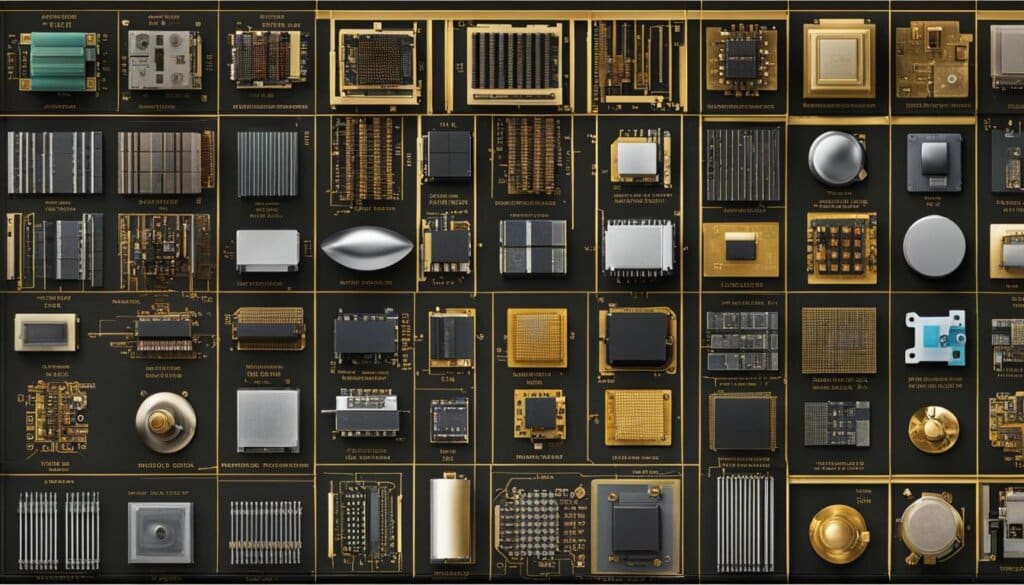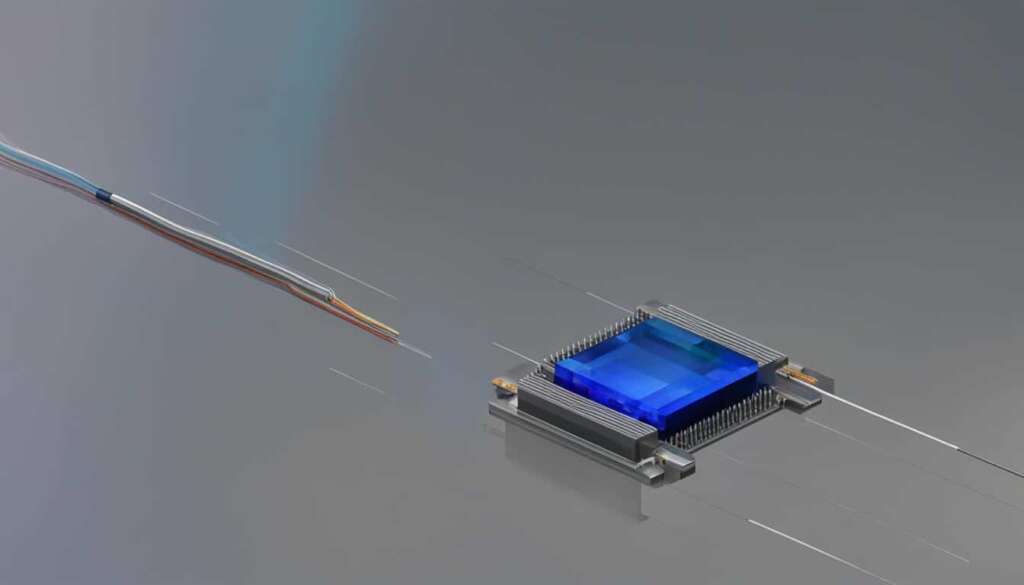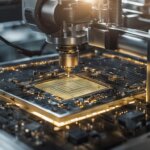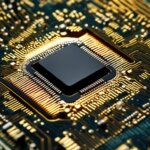Table of Contents
Welcome to our comprehensive guide on transistors in electronics. In this article, we will explore what transistors are and their role in the world of technology. Whether you’re a tech enthusiast or a curious learner, this guide will provide you with valuable insights into the fascinating world of transistors.
So, what is a transistor? At its core, a transistor is a semiconductor device that has the remarkable ability to amplify or switch electronic signals. It is a crucial component in various electronic devices we use daily, such as computers, radios, TVs, and mobile phones. Transistors have revolutionized the field of electronics, enabling miniaturization and the development of integrated circuits and microprocessors.
In this guide, we will delve into the basics of transistors, exploring the different types available and their numerous applications. We’ll also take a glimpse into the intriguing history of transistors, which started with their invention in 1947 at Bell Laboratories. This breakthrough invention paved the way for the semiconductor era and transformed the world as we know it today.
So, whether you’re an aspiring engineer or simply curious about the inner workings of modern technology, join us on this journey to unravel the mysteries of transistors and understand their pivotal role in electronics.
What are Transistors?
Transistors are essential components of modern electronics that play a critical role in amplifying and switching electronic signals. Developed in the 1940s, transistors are made from materials such as silicon. They have revolutionized technology by enabling the miniaturization of electronic devices and the development of integrated circuits and microprocessors. Understanding the basics of transistors, the types available, and their various applications is crucial for anyone interested in electronics.
The Basics of Transistors
Transistors are semiconductor devices that can control the flow of electric current. They consist of three layers of semiconductor material and have three terminals: the emitter, base, and collector. Bipolar junction transistors (BJTs) and field-effect transistors (FETs) are the two main types of transistors.
Types of Transistors
BJTs, as mentioned earlier, have three layers of semiconductor material. They can be used for both amplification and switching electronic signals. FETs, on the other hand, have one or two layers of semiconductor material and are primarily used for amplification. Other types of transistors include junction field effect transistors (JFETs) and metal-oxide-semiconductor field-effect transistors (MOSFETs).
Applications of Transistors
Transistors are used in a wide range of electronic devices, making them essential to numerous industries and everyday life. They can amplify signals, switch between circuits, and control the flow of current. Some common applications of transistors include:
- Computers and laptops: Transistors are crucial components in CPUs and memory chips, enabling high-speed computations and data storage.
- Radios and televisions: Transistors allow for the reception and amplification of radio and television signals.
- Mobile phones: Transistors are integral to the functioning of mobile phones, enabling communication, data processing, and signal reception.
| Type of Transistor | Main Characteristics | Common Applications |
|---|---|---|
| Bipolar junction transistor (BJT) | Amplification and switching | Audio amplifiers, digital logic circuits |
| Field-effect transistor (FET) | Amplification | Radio frequency (RF) amplifiers, microprocessors |
The History of Transistors
Transistors, the crucial components of modern electronics, have a fascinating and impactful history. Invented in 1947 by a team of brilliant scientists at Bell Laboratories, including William Shockley, John Bardeen, and Walter Brattain, transistors brought about a revolutionary change in the world of technology and electrical engineering.
The initial transistors were constructed using germanium, but they were quickly replaced by silicon transistors due to their superior electrical properties. This development marked the beginning of the semiconductor era, opening up a realm of possibilities for the future of electronics.
The invention and subsequent evolution of transistors have had a profound impact on the development of modern electronics. By enabling the miniaturization of electronic devices, transistors have paved the way for the creation of integrated circuits and microprocessors. This breakthrough technology has transformed society, catalyzing advancements in various fields and sectors.

| Year | Significant Milestone |
|---|---|
| 1947 | Invention of the transistor at Bell Laboratories |
| 1960s | Introduction of integrated circuits |
| 1971 | Development of the first microprocessor by Intel |
| 1980s | Advancements in transistor technology, including the MOSFET |
| Present | Continual progress in transistor miniaturization and performance |
Evolution and Modern Transistors
Since their invention, transistors have undergone a rapid evolution, paving the way for advancements in technology and shaping the modern world. Let’s explore the journey of transistors and the significant developments that have taken place.
The First Transistor: Point-Contact Transistor
The initial breakthrough in transistor technology came with the invention of the point-contact transistor. This early version, introduced in the late 1940s, used the properties of materials like germanium to amplify and switch electronic signals. However, the point-contact transistor had limitations in terms of reliability and ease of manufacturing, making it less practical for widespread use.
The Junction Transistor: Improved Reliability and Manufacturability
To address the challenges posed by the point-contact transistor, researchers introduced the junction transistor. This design, which replaced the delicate point contacts with p-n junctions, offered improved reliability and was easier to manufacture consistently. The junction transistor became the go-to choice for many applications, including early computers and communication systems.
Bipolar Junction Transistors (BJTs) and Field-Effect Transistors (FETs)
The evolution of transistors continued with the development of two major types: bipolar junction transistors (BJTs) and field-effect transistors (FETs). BJTs, consisting of three layers of semiconductor material, are capable of both amplification and switching. FETs, on the other hand, have one or two layers and are primarily used for amplification.
Transistor Materials and Manufacturing Process
Transistors are typically made from semiconductor materials, with silicon being the most commonly used. Other materials, such as germanium and gallium arsenide, are also employed in specific applications. The manufacturing process involves intricate steps, including doping the semiconductor material to create desired electrical properties, forming the necessary transistor structures, and integrating them into electronic circuits.
Table:
| Transistor Type | Main Features | Common Applications |
|---|---|---|
| Bipolar Junction Transistors (BJTs) | • Consist of three layers of semiconductor material • Can amplify and switch signals • Higher power handling capabilities |
• Audio amplification • Signal processing • Power applications |
| Field-Effect Transistors (FETs) | • Have one or two layers of semiconductor material • Primarily used for amplification • Lower power consumption |
• High-frequency communication • Low-power applications • Integrated circuits |
As technology continues to advance, the evolution of transistors plays a crucial role in enabling smaller, faster, and more efficient electronic devices. The constant development of transistor technology paves the way for further innovations that shape our interconnected world.
Transistors Explained
Transistors are versatile electronic devices that can function as switches or amplifiers for electronic signals. Understanding how transistors work is crucial in comprehending their significance in modern electronics.
A transistor consists of three essential terminals: the emitter, base, and collector. Each plays a vital role in the transistor’s operation. The emitter supplies the necessary current, while the base controls the flow of current. The collector, on the other hand, collects the current.
Transistors can be categorized into two primary types: bipolar junction transistors (BJTs) and field-effect transistors (FETs). BJTs, distinguished by their three-layer structure, have the capability to both amplify and switch electronic signals. On the other hand, FETs rely on an electric field to govern the flow of current and possess three terminals: source, drain, and gate.
Aside from BJTs and FETs, other types of transistors include junction field effect transistors (JFETs) and metal-oxide-semiconductor field-effect transistors (MOSFETs). Each type holds unique characteristics and applications within the realm of electronic devices.
FAQ
What is a transistor?
A transistor is a semiconductor device that can amplify or switch electronic signals. It is one of the most important components in electronics and is used in a wide range of devices, including computers, radios, TVs, and mobile phones.
What are the types of transistors?
Transistors come in two main types: bipolar junction transistors (BJTs) and field-effect transistors (FETs).
What are the applications of transistors?
Transistors are used in a wide range of electronic devices, including computers, radios, TVs, and mobile phones. They can be used to amplify signals, switch between circuits, and control the flow of current.
Who invented the transistor?
The transistor was first invented in 1947 by a team of scientists at Bell Laboratories, which included William Shockley, John Bardeen, and Walter Brattain.
How have transistors evolved over time?
Transistors have undergone a rapid evolution since their invention, with improvements in manufacturing reliability and design. The first transistor was the point-contact transistor, followed by the junction transistor. The evolution continued with the development of bipolar junction transistors (BJTs) and field-effect transistors (FETs).
How do transistors work?
Transistors can act as switches or amplifiers for electronic signals. They have three terminals: emitter, base, and collector. The emitter supplies current, the base controls the current flow, and the collector collects the current. There are different types of transistors, each with their own working principles.













